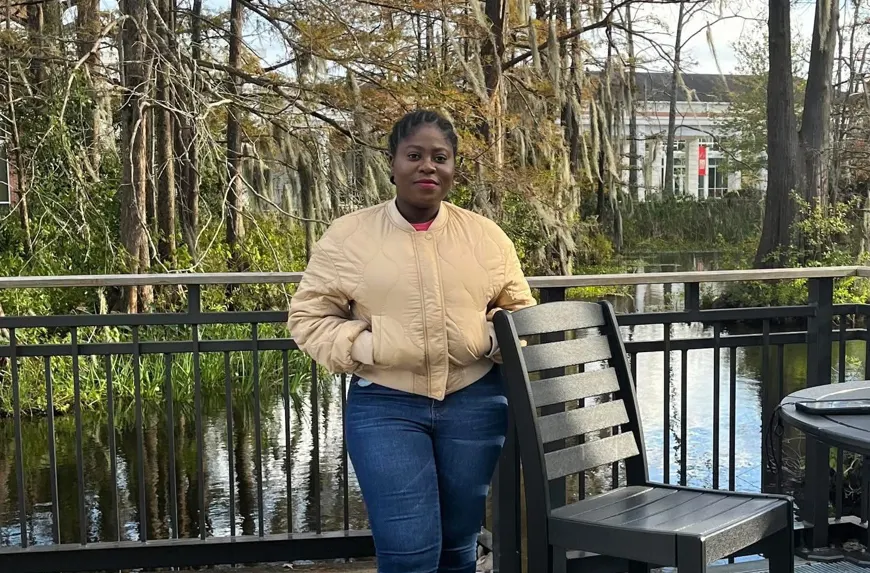
Late last year, I watched a group of ten-year-olds gather around a colorful board game in a rural community. They laughed, debated, and rolled dice until one player landed on an “illegal mining” space and was punished, losing so many points that she had to start again from the beginning. This made the children begin discussing how illegal mining destroys forests, pollutes rivers, harms animals, and leaves the soil too dry for crops to grow. They also talked about how planting trees could help restore the land, protect wildlife, and bring back clean air and water.
By the end of the game, they weren’t just playing, they were planning how to plant trees around their homes. This simple moment captures something powerful: games can transform how young people understand the world and their role in protecting it.
Why Games Are Powerful Learning Tools
Deforestation and Climate Change are among the most pressing environmental challenges confronting the world today. Across Africa and beyond, forests are disappearing at alarming rates as a result of illegal logging, unsustainable farming practices, and the burning of firewood. This rapid forest loss threatens biodiversity, undermines food security, and destabilizes the global climate system.
Addressing these challenges requires more than policy frameworks or technological innovations; it demands widespread shifts in public awareness, environmental education, and behavioral practices. Games present a powerful and innovative means of achieving this transformation by translating complex environmental issues into interactive, relatable learning experiences.
Unlike traditional classroom-based approaches, games engage participants actively and immersively. They allow learners of all ages, including children, adolescents, and adults, to “learn by doing,” experiencing the consequences of harmful activities such as illegal mining or excessive logging, while also witnessing the benefits of sustainable actions, including tree planting, reforestation, and wildlife conservation. This experiential approach makes learning both memorable and emotionally resonant, fostering empathy, critical thinking, and problem-solving skills that are essential for driving meaningful environmental change.
From Awareness to Action
One of the greatest barriers to addressing deforestation and climate change is the widespread lack of awareness regarding the long-term consequences of daily actions. Many individuals and communities contribute to environmental degradation without fully recognizing the impact of their practices.
Games can help close this awareness gap. They make the invisible visible by demonstrating, for example, how deforestation or mining in forested areas leads to soil erosion, declining crop yields, and food insecurity. By allowing players to observe these cause-and-effect relationships within a simulated environment, games transform sustainability from an abstract notion into a personal and tangible responsibility.
This approach is effective for both younger and older audiences. While children and adolescents are highly receptive to interactive learning and can carry these lessons into adulthood, adults also benefit by reassessing long-standing behaviors, acquiring new perspectives, and strengthening their commitment to sustainable living. In both cases, gameplay can inspire long-term mindset shifts and foster collective action across households, workplaces, and communities.
Play as a Climate Solution
Policy interventions and technological solutions are essential to combating deforestation and climate change, but they cannot succeed in isolation. Achieving lasting impact requires individuals of all ages who understand the urgency of these challenges and feel personally responsible for addressing them.
Games are uniquely positioned to cultivate this sense of responsibility. By making environmental education engaging, accessible, and impactful, they can encourage both young people and adults to see themselves as active participants in creating change rather than passive observers.
Through play, it is possible to nurture climate-conscious citizens, regardless of age, who will become the leaders, innovators, and stewards of our planet. While games may not directly plant trees or reduce greenhouse gas emissions, they can inspire the people who will, making them an indispensable tool in the fight against deforestation and climate change.
Conclusion
As the world grapples with accelerating deforestation and the escalating impacts of climate change, the need for innovative educational approaches has never been greater. Games offer a compelling solution by transforming environmental education into an interactive and meaningful experience for both youth and adults.
By harnessing the power of play, we can cultivate informed, engaged, and responsible global citizens who will champion sustainable practices and safeguard the planet for generations to come. Now is the time to invest in game-based learning as a strategic tool for building a climate-conscious society.







